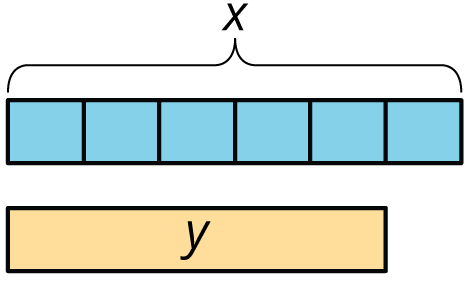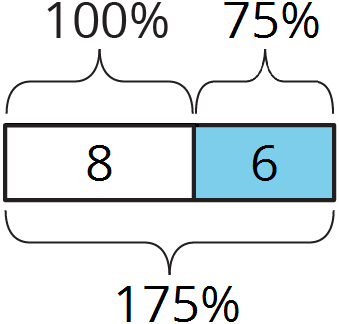
Proportional Relationships with Fractions
This week your student is learning about proportional relationships that involve fractions and decimals. For example, a baker decides to start using
| amount of sugar in the recipe ( |
amount of sugar the baker uses ( |
|
|---|---|---|
| row 1 | 1 cup | |
| row 2 | ||
| row 3 | 2 cups |
The amount of sugar the baker actually uses,
Another way to write this equation is
Here is a task to try with your student:
The baker also decides to start using
- How much of each ingredient will the baker use if the recipe calls for:
112 cups of milk?- 3 tablespoons of oil?
- What is the constant of proportionality for the relationship between the amount of liquid called for in the recipe and the amount this baker uses?
Solution:
134 cups.312 tablespoons.
76,1.16⎯⎯⎯ , or equivalent.
Percent Increase and Decrease
This week, your student is learning to describe increases and decreases as a percentage of the starting amount. For example, two different school clubs can gain the same number of students, but have different percent increases.
The cooking club had 50 students. Then they gained 6 students.
This is a 12% increase, because

They now have 56 students, which is 112% of the starting amount.
The computer club had 8 students. Then they gained 6 students.
This is a 75% increase, because

They now have 14 students, which is 175% of the starting amount.
Here is a task to try with your student:
The photography club had 20 students. Then the number of students increased by 35%. How many students are in the photography club now?
Solution:
27 students. Possible strategies:
- The club gained 7 new students, because
0.35⋅20=7 . The club now has 27 students, because20+7=27 . - The club now has 135% as many students as they started with, because
100+35=135 . That means they have 27 students, because1.35⋅20=27 .
Applying Percentages
This week, your student is learning about real-world situations that use percent increase and percent decrease, such as tax, interest, mark-up, and discounts.
For example, the price tag on a jacket says $24. The customer must also pay a sales tax equal to 7.5% of the price. What is the total cost of the jacket, including tax?
The customer will pay 107.5% of the price listed on the tag, which is $25.80.
We can also find the percentage. For example, a backpack originally cost $22.50, but is on sale for $18.99. The discount is what percentage of the original price?
The sale price is 84.4% of the original price. The discount is
Here is a task to try with your student:
A restaurant bill is $18.75. If you paid $22, what percentage tip did you leave for the server?
Solution:
IM 6–8 Math was originally developed by Open Up Resources and authored by Illustrative Mathematics, and is copyright 2017-2019 by Open Up Resources. It is licensed under the Creative Commons Attribution 4.0 International License (CC BY 4.0). OUR's 6–8 Math Curriculum is available at https://openupresources.org/math-curriculum/.